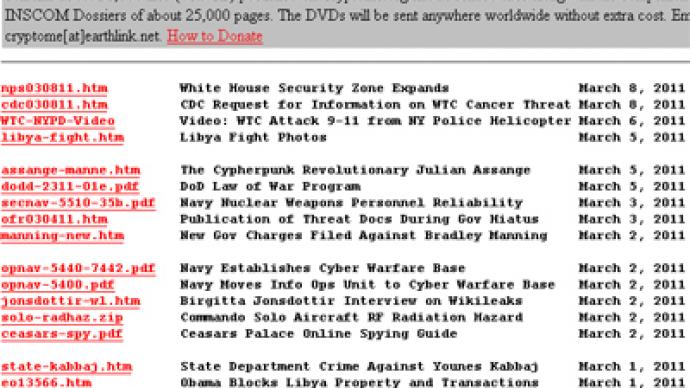NYC through the eyes of a cryptic critic

John Young and his partner Deborah Natsios started the website Cryptome.org a decade before WikiLeaks was around, releasing classified and secret government documents from all over the world.
In addition to leaks, Young seeks out and photographs what he calls "sensitive sites," which he puts on the website in an area called the "eyeball series." First stop on the tour is the Federal courthouse where terrorism suspects are tried. Photos John Young of Cryptome.org has published of places like this, as well as the police and judicial headquarters known as the "ring of steel” have led the FBI to visit him and critics to say he’s putting national security at risk. Young begs to differ.“In contrary, censorship is a risk to our society our most valuable aspect is that it’s open and we can see what’s going on,” he argued. “Censorship, secrecy all works against a democratic society.”Young said post 9/11 America has amounted to a buildup of secrecy, seen all over areas like the federal detention center, prosecutor’s office, and court house in downtown Manhattan. Pointing to the officers, checkpoints, and FBI barricades, it's what he calls security theatre.And at the intersection of “justice, police, everything," as Young referred to it, we were greeted by an officer around every corner. They wanted to know what we were doing and if we had permission to film.John opposes the fortress-looking buildup like this secured entrance outside of the prosecutors’ offices. He also thinks in this particular case after doing some research, it’s a decoy."It turns out I know the prosecutors are in an office down the street and that’s in court papers," said Young.Young is an architect by trade so he reads buildings like books, and the biggest theme he took out of this area is the money being made.“These are huge businesses," John said. "They call them government operations but they’re huge because they send out huge contracts all cloaked in secrecy.”It’s all of this he is trying to address in his work with Cryptome. Just down the street, is the federal building that houses the FBI. But he has discovered it’s not all as formidable as it seems.“Anyone can go in the cafeteria and eat," he was surprised to find.Despite all these discoveries there are some details of New York he hasn’t found. Like the CIA office.Next stop: Wall Street but first, the world’s largest repository of gold. Yes, it has more than Fort Knox, that's housed mostly for other countries, behind this wall of the New York Federal Reserve. "Eight feet of concrete is nothing for someone who wants to get that much gold," John said, skeptical that it's really kept there.And filming around the financial center of arguably the world, we are met with skepticism: The third officer of the day. Nonetheless the tour goes on. Wall Street brings a cobblestone pavement that John explained was concocted to make it more "cute." And we see more security, which Young called "showboating." John argued the point of seeing the security firsthand is to question it all more."Should we really be pumping this much money into all this showboating?" he asked rhetorically. "I’m trying to deflate the hyperbole these sensitive sites aren’t sensitive at all. The information is out there go look.”













